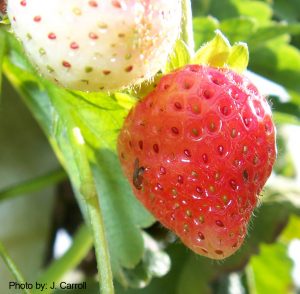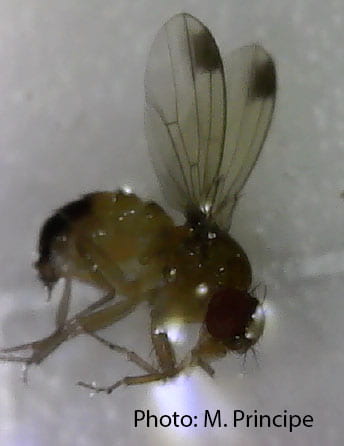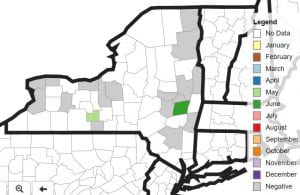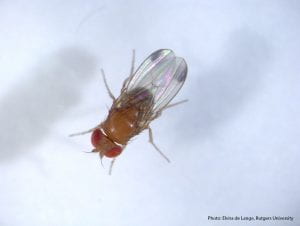One female SWD was caught in both of the raspberry plantings where traps are set in Ulster County. These traps, checked on June 5, 2019, are being monitored by Jim O’Connell, Cornell Cooperative Extension Association of Ulster County.
The farms grow both raspberries and blueberries. Raspberry fruit is still hard and green. Therefore, there is no need to treat with SWD-targeted insecticides at this point in time. Since plants are still blooming, protect pollinators by avoiding insecticide use during bloom. Pollinator Network at Cornell – Grower Resources, pollinator.cals.cornell.edu/resources/grower-resources/

For those farms where June strawberries are approaching harvest or where harvest is underway, this crop will be at risk this year. It is relatively easy to use red or yellow sticky cards to monitor for male SWD in strawberry plantings. Set the sticky card traps on the edge of the planting where it is convenient to read them daily. Here’s one place you can order trap and lure supplies – Great Lakes IPM, www.greatlakesipm.com/.
Because trap catch in New York is early this year, many crops that typically escape injury may be at risk of infestation.
A blog with comprehensive coverage of SWD management will be posted next week. In the meantime, consult Cornell Fruit Resources SWD Management, fruit.cornell.edu/spottedwing/management/. Refer to the Cornell Guidelines, cropandpestguides.cce.cornell.edu/.
Commercial growers should have the 2019 versions of the Berry Crops, Tree Fruit, or Grape Guidelines.







